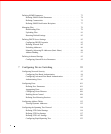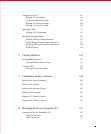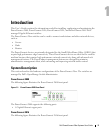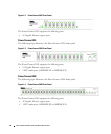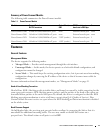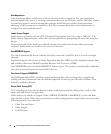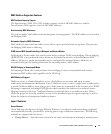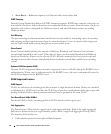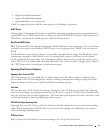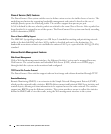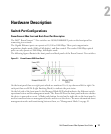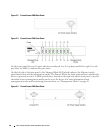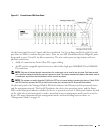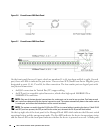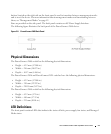
14 Dell PowerConnect 28xx Systems User Guide
•
Short-Reach
— Reduction of power over Ethernet cables shorter than 40m.
IGMP Snooping
Internet Group Membership Protocol (IGMP) Snooping examines IGMP frame contents, when they are
forwarded by the device from work stations to an upstream Multicast router. From the frame, the device
identifies work stations configured for Multicast sessions, and which Multicast routers are sending
Multicast frames.
Port Mirroring
The port mirroring mechanism monitors and mirrors network traffic by forwarding copies of incoming
and outgoing packets from a monitored port to a monitoring port. Users can specify which target port
receives copies of all traffic passing through one or more source ports.
Storm Control
Storm Control enables limiting the amount of Multicast, Broadcast and Unknown Unicast frames
accepted and forwarded by the switch. When Layer 2 frames are forwarded, Broadcast and Multicast
frames are flooded to all ports on the relevant VLAN. All nodes connected to these ports accept and
attempt to process these frames, thus placing load on both the network links and the host operating
system.
Dynamic VLAN Assignment (DVA)
Dynamic VLAN Assignment allows automatic assignment of users to VLANs during the RADIUS server
authentication. When a user is authenticated by the RADIUS server, the user is automatically joined to
the VLAN configured on the RADIUS server.
VLAN Supported Features
VLAN Support
VLANs are collections of switching ports that comprise a single broadcast domain. Packets are classified
as belonging to a VLAN based on either the VLAN tag or based on a combination of the ingress port and
package contents. Packets sharing common attributes can be grouped in the same VLAN.
Port Based Virtual LANs (VLANs)
Port-based VLANs classify incoming packets to VLANs based on their ingress port.
Link Aggregation
The PowerConnect 28xx switches support up to eight aggregated links. Each of the eight aggregated
links may be defined with up to eight member ports to form a single Link Aggregated Group (LAG).
The benefits of this facility are:
• Fault tolerance protection from physical link disruption



